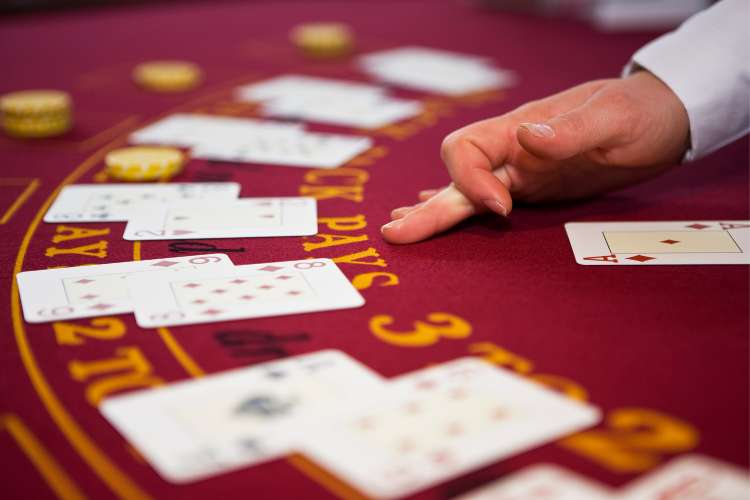
What's on this page
Blackjack is one of the most popular and exciting casino games in the world today. Whether played at a land-based casino or online, it offers a perfect blend of skill and luck. You’ve probably enjoyed a game or two, but do you know where it all started? In this article, we’ll explore the fascinating journey of blackjack—from its humble beginnings to its modern-day form. Let’s dive into the history of blackjack and see how it became the game we know and love.
Early Beginnings: The Origins of Blackjack
The story of blackjack dates back hundreds of years, with its roots traced to ancient civilizations. The origins of card games go as far back as China, Egypt, and Europe. However, it is widely believed that the game that would eventually become blackjack began in France during the 17th century.
The French game Vingt-et-Un, meaning “21,” is often seen as the ancestor of blackjack. Played with similar rules to today’s game, it was immensely popular in French society. Over time, the game made its way to Spain and Italy, evolving along the way.
As it spread across Europe, Vingt-et-Un found its way to North America in the 18th century. This shift set the stage for the transformation into modern blackjack, with some variations of the game gaining popularity in the United States.
The French Influence: Vingt-et-Un
The French influence on the game is undeniable. Vingt-et-Un, or “Twenty-One,” followed basic rules similar to what we play today: players attempted to get a hand total as close to 21 as possible without exceeding it.
This early version of blackjack didn’t have the specific structure we see today, such as betting or special payouts for aces and face cards. In fact, Vingt-et-Un was often played with a limited number of players. It was a social game, primarily played in smaller settings, unlike the large casino floors we associate with blackjack today.
The introduction of the rule of the dealer in Vingt-et-Un set a precedent for how blackjack games would later evolve, especially in American casinos. French colonists who migrated to the U.S. carried the game with them, where it would eventually become a gambling staple.
Blackjack in the Americas: The American Evolution
By the early 19th century, blackjack had firmly established itself in American gambling halls. It gained popularity quickly, especially in New Orleans, which was a major port and center for entertainment.
This early American version of blackjack was not immediately the same as today’s game. It had fewer standardized rules, and it was not uncommon for games to vary significantly from one gambling house to another. But one thing was certain: the thrill of trying to get as close to 21 as possible was captivating players across the country.
The game’s name “blackjack” was coined in the United States during the Gold Rush era. Casinos started offering a special payout of 10-to-1 for a hand consisting of an ace of spades and a black jack (the jack of spades or clubs). This promotional offer caught the attention of gamblers, and soon enough, the game became synonymous with the term blackjack.
The Game’s Popularity Boom: 20th Century
The popularity of blackjack truly exploded in the early 20th century, especially with the advent of Las Vegas in the 1940s. As the city emerged as the epicenter of entertainment and gambling, blackjack found a permanent place on casino floors.
Casinos began to formalize the rules of blackjack, ensuring a consistent and fair gaming experience for players. It was during this time that we saw the introduction of multiple deck systems and more structured betting options. By the 1950s and 1960s, blackjack had become the cornerstone of any successful casino, alongside other card games like poker.
But the most significant moment for blackjack came with the publication of Edward O. Thorp’s book, “Beat the Dealer” in 1962. This book introduced the concept of card counting and provided a mathematical approach to blackjack, which forever changed how the game was played.
The Birth of Card Counting and Casinos’ Response
One of the most pivotal moments in blackjack’s history came in the 1960s with the advent of card counting. Edward O. Thorp, a mathematics professor, developed a system that allowed players to keep track of the ratio of high cards to low cards in the deck. By doing this, players could gain an edge over the house.
Casinos responded by increasing their security measures, including the introduction of multiple decks and automatic shuffling machines, to thwart card counters. These measures changed the way blackjack was played, but card counting still persisted in the underground blackjack scene.
The success of card counting made blackjack even more popular, and it solidified the game as a high-skill card game. It was no longer just about luck—it was a game of strategy and tactics.
Blackjack in the Modern Era: Online and Global Expansion
In the 21st century, blackjack took a massive leap forward with the rise of online gambling. The advent of online casinos allowed players from the UK and around the world to enjoy blackjack from the comfort of their homes.
Thanks to the development of live dealer blackjack, players could now experience the excitement of real-time casino gameplay online, with live dealers interacting with them through video streams. This innovation opened up the game to a whole new audience and brought the thrill of a land-based casino directly to players’ screens.
As online casinos became more widespread, blackjack grew in popularity, and we saw many variations emerge. From European blackjack to Spanish 21, there are now many different types of blackjack games, each with its own set of rules and variations.
The Evolution of Blackjack Rules and Variations
Over the years, blackjack has undergone several changes, including rule modifications and the introduction of new variations. Some of the most popular variations include:
- Spanish 21: This version uses a Spanish deck with no tens, giving players the chance to get a 21 with more flexible rules.
- Double Exposure Blackjack: In this variant, both of the dealer’s cards are exposed, providing a strategic advantage to players.
- Pontoon: A variant often played in the UK, where players must get a hand of 21 or 22 to win.
While the classic blackjack rules still dominate most casinos, these newer variations have gained traction in the modern era. They offer fresh challenges for seasoned players and keep the game interesting for newcomers.
Blackjack’s Cultural Impact and Legacy
Blackjack has transcended the boundaries of the casino world and become ingrained in popular culture. From movies like 21 to James Bond’s Casino Royale, blackjack has been featured in countless films, TV shows, and books.
The game’s association with skill, strategy, and chance has made it a symbol of excitement, intellectual challenge, and the possibility of big wins. In the UK, blackjack remains a key feature of both online and land-based casinos, with its simple yet engaging rules continuing to attract new players.
Conclusion
Blackjack’s evolution from its humble origins in France to its modern-day status as one of the world’s most popular casino games is a testament to its enduring appeal. Over the centuries, the game has evolved with the times, embracing new strategies, innovative variations, and technological advancements.
Remember, while blackjack is a game of skill and strategy, it’s important to approach it with responsible gaming in mind. So, grab your cards, enjoy the game, and have fun responsibly!





